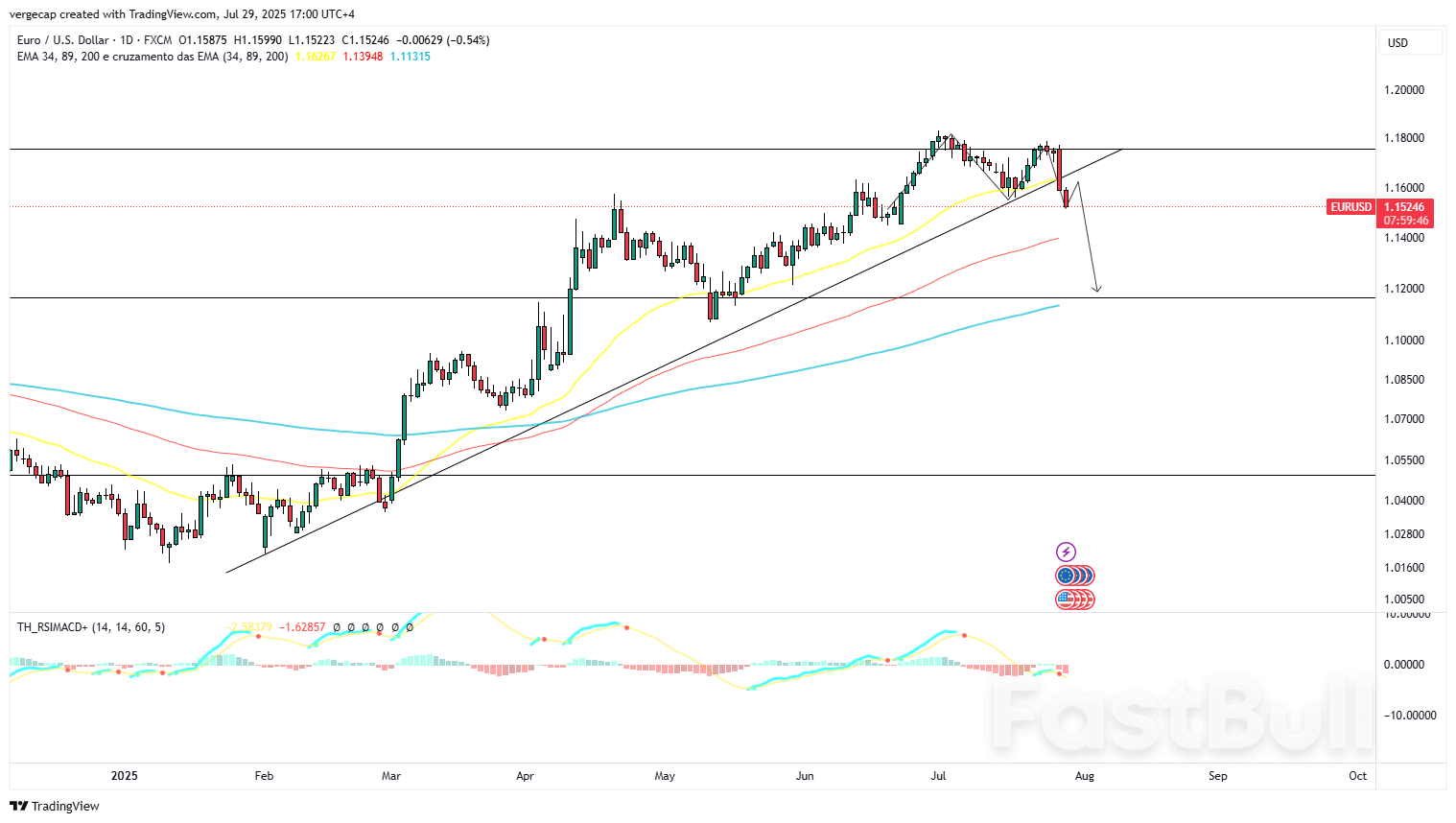The euro continued to struggle on Tuesday, with the EUR/USD pair remaining on the defensive in European trading as investors digested the fallout from a contentious new trade agreement between the United States and the European Union. Although the common currency managed a modest rebound from a fresh one-month low of 1.1525, the broader market tone remains bearish, as traders adjust to the growing divergence in economic and political sentiment across the Atlantic.
The EUR/USD pair has fallen nearly 2% from Monday's highs, as initial euphoria around the trade agreement quickly gave way to skepticism. Upon closer inspection, the deal—touted by U.S. officials as a breakthrough in transatlantic relations—appears to disproportionately favor American exporters while exposing key sectors of the European economy to increased competition.
During the European morning session, the pair attempted to recover from its lows, briefly touching the 1.1600 handle before being met with renewed selling pressure. By mid-session, the euro had retraced back to the 1.1550 area, suggesting that rallies are still being sold into, and that bearish momentum may not be exhausted yet.
In Brussels, European Commission officials are facing a wave of criticism from member states who feel blindsided by the trade pact’s terms. French Prime Minister François Bayrou described the agreement as a “submission,” while German Chancellor Friedrich Merz warned of “substantial damage” to Germany’s industrial base, particularly its automotive and machinery sectors.
“Brussels has given away too much for too little in return,” said an unnamed senior EU diplomat, echoing widespread concerns across the bloc. “This is not the strategic realignment with the U.S. that we were promised. It feels more like a concession under pressure.”
With the EU already navigating a patchy recovery and rising internal divisions, the timing of the backlash could not be worse. The political fallout may further complicate the European Central Bank’s (ECB) already delicate balancing act between fostering growth and curbing inflation, while also managing expectations for rate normalization later in the year.
In stark contrast, the U.S. Dollar has emerged as the clear beneficiary of the recent developments. The greenback’s resurgence is being fueled not only by favorable trade deals but also by mounting confidence in the resilience of the American economy.
The DXY dollar index continues to trend higher, supported by an increasingly hawkish Federal Reserve and robust macroeconomic fundamentals. Investors are now bracing for a pivotal week packed with high-stakes data, beginning with Tuesday’s Consumer Confidence report and the JOLTs Job Openings. These releases will set the stage for the Federal Reserve’s monetary policy decision on Wednesday, and the much-anticipated Nonfarm Payrolls (NFP) report on Friday.
Markets are currently pricing in a hawkish hold from the Fed, with Chair Jerome Powell expected to reaffirm the central bank’s commitment to keeping rates elevated for longer, especially as inflation remains sticky and the labor market shows resilience.
Technical Analysis 
From a technical standpoint, EUR/USD remains structurally bearish. A confluence of high-timeframe (HTF) expanding structure patterns and a well-formed Head-and-Shoulders (HnS) formation continues to favor downside price action. Recent price behavior has confirmed a breakout from a key bullish trendline, suggesting the corrective rally seen earlier today may be short-lived.
A low-timeframe (LTF) bearish impulse remains intact, with momentum indicators such as the Relative Strength Index (RSI) having just emerged from oversold territory—hinting at only a brief reprieve rather than a sustainable trend reversal.
I continue to favor a “sell-the-rally” strategy in the near term. The area around 1.1600 has proven to be a firm ceiling, and sellers have repeatedly emerged at that level. My preferred short entry lies around 1.1525, offering an attractive 1:3+ risk-reward setup. Should price pierce below this level decisively, I would watch for interim support near the 1.1400 zone, which marks a longer-term Fibonacci retracement and psychological inflection point.
Despite the brief uptick in early Tuesday trade, the broader momentum is skewed firmly to the downside. The technical landscape, combined with increasingly negative sentiment surrounding the EU’s trade diplomacy, leaves the Euro vulnerable to further depreciation in the short term.
TRADE RECOMMENDATION
SELL EURUSD
ENTRY PRICE: 1.1523
STOP LOSS: 1.1850
TAKE PROFIT: 1.1400













